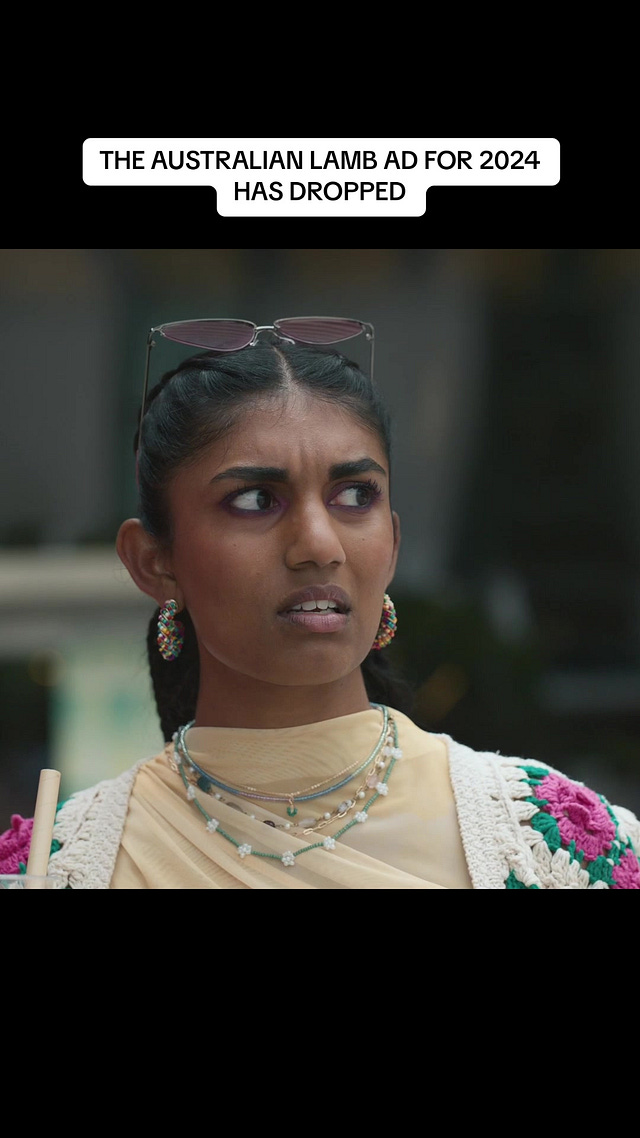What is the true essence of frustration if not the feeling of speaking into the void, being unseen, unheard, and eliciting no tangible response? Psychology highlights that indifference, marked by a lack of acknowledgment, is more painful than anger. Unlike anger, which involves emotional engagement, indifference signifies a complete withdrawal, denying the other's existence.
This is a reality brands face today, particularly in the realm of social media: gaining organic visibility has turned into a kind of elusive goal. Despite the alluring promises of platforms like Facebook & Co with their new 'shadow social' features – a topic I recently explored in Noémie Aubron's newsletter, in French – this challenge persists.
The solution? It appears to lie in pay-to-play, advertising. However, this approach comes with its own challenges. To stand out, ad creatives must reach an unprecedented level of excellence. This demand intensifies with the advent of generative AI, capable of producing content at scale, pushing the boundaries of ad production and, to some extent, redefining the limits of creativity.
So here we are facing a key question: what characterizes high-quality advertising content in 2023? The response appears to be rooted in surprise and the unexpected, an approach that's well-known in marketing but is currently undergoing a transformation that captures the essence of the prevailing zeitgeist
Take a look:
Cinematic ads. What you see above, when you click on the post, is a creation by the French company Opal—an app designed to assist in managing your screen time. This advertisement significantly departs from the usual formats; it channels the style of a Casey Neistat movie trailer and features compelling lines like 'How much of yourself do you FEED to the beast.' Marjolaine Chirpaz, an Opal employee, expressed her thoughts on LinkedIn: “This advertisement is undeniably unique, and that's where its strength lies. Quinn Ryan initially crafted it to convey his battle against social media addiction. Its sincerity is what makes it touching and deeply resonated with us at Opal.”
Here's another example: a recent TikTok advertisement for Australian lamb, presented in the form of a micro-series or a humorous parody, also garnered significant attention. It challenges the marketing wisdom that suggests a campaign attempting to appeal to everyone effectively targets no one. Instead, this ad managed to captivate audiences of all generations while perfectly encapsulating the spirit of times.
"The 'weird' is making its way. Following my discussions on the new standards of beauty where the ugly becomes a trend, the bizarre is gaining ground. Take a look below at this Booking.com advertisement.

Is it a visual download error? Possible, but unlikely. Is this ad beautiful? No. Ugly? Not really, just surprisingly strange. It's hard to imagine Booking.com, a leader in online travel, running out of picturesque images of its destinations. The choice appears intentional: the ad grabs attention, sparks curiosity, and elicits various reactions, the depth of which I'll leave for you to appreciate.
Food for thought. The uniqueness of weird content lies in its power to spark thoughts and provoke questions. An example of this is an advertisement from Oatly, where you can read: 'Life is full of coincidences and strange encounters. We started sponsoring Functional Fitness and CrossFit athletes on the day we discovered that our colleague Sophie Jensen is a champion in these disciplines. What are the odds?'"
Yes, it's unlikely. And intriguing. I can already picture most people wondering what 'functional fitness' precisely entails (assuming, of course, that everyone is well-acquainted with CrossFit!) The connection between plant-based milk and these sports might appear a bit hazy, even though there's a photo hinting at an impromptu workout involving them (that's the 'functional fitness' !). On further thought, it brings to mind 'somatic workouts,' exercises that seamlessly blend the mind and body, much like Afghan walking, a practice my naturopath has recommended. In the end, the bricks all fall in place (Eureka!).
Perhaps I've led you astray, causing you to wonder if I'm meandering off course. Yet, it's precisely here that the secret of effective advertising in 2023 may reside: advertising that sparks contemplation. However, a word of caution is in order. In an age where both writing and information have become commonplace commodities, navigating the realm of online content is as intricate as deciphering a plot in 'The Mentalist.' Our social landscape, saturated with its own lexicon of emojis and memes, and tinged with post-irony, frequently alludes to 'cultural moments': subtle references to the latest TikToks and 'trends' that materialize and dissipate at the speed of light. This abundance can, at times, lead to confusion.
Yet, confusion can be a potent tool of manipulation. In the ever-evolving digital realm, how will we navigate the delicate balance between truth and manipulation, authenticity and artifice? This poses a substantial challenge, one that becomes even more pressing with the widespread presence of AI and deepfakes, alongside virtual worlds in the years ahead.
MD









what if 'attention-grabbing' was just the playbook for short-term game (gain)? what if very long-term/ long-lasting/ forever kind of brands may need one tactic above all else: avoid any marketing play/ all ads/ all 'social media' at all cost? at least for your first few decades of existence. I try to find counter-examples 🧐